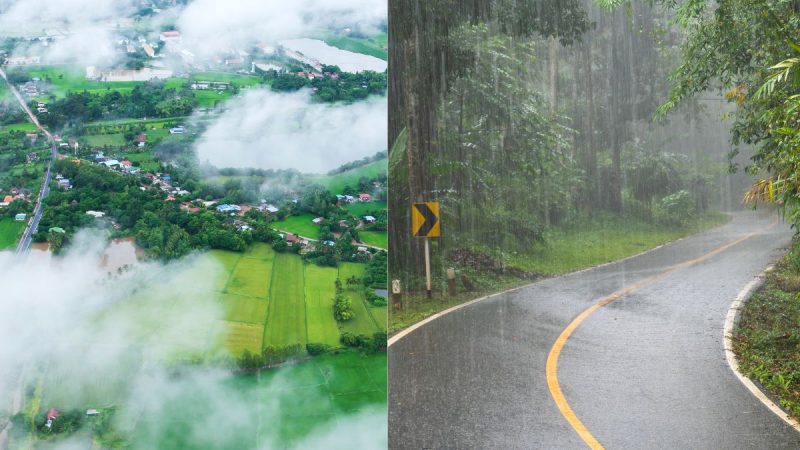Climate change is causing significant shifts in weather patterns across the globe, and North East India is no exception. According to a research paper, extreme rainfall events have quadrupled in frequency over the Meghalaya plateau and neighbouring territories (Assam) between 1950 and 2021.
Rainfall Increases In North-East India
One of the prominent effects of climate change in this region is the increase in rainfall. It has profound implications for the environment and economy. According to the research paper published in the Journal of the Royal Meteorological Society, rainfall has been decreasing in those regions. Although Cherrapunji and Mawsynram are two of the wettest spots in India and the world, Meghalaya has historically had a lot of rainfall. However, data from the Indian Meteorological Department (IMD) shows that the amount of monsoon rain in the northeastern region, which includes Meghalaya, has been declining over the past 30 years.
Northeast India and Bangladesh are geographically prone to flooding. The region’s dense population makes it more vulnerable. Extreme monsoon rains are becoming more common in this region. The intensity of rainfall is increasing. This makes it challenging for weather models to accurately anticipate high rainfall quantities in a changing environment. Extreme rains are expected to intensify in some places shortly.
The researchers compared their findings. Cherapunji in the Meghalaya Plateau had the third largest one-day rainfall (972 mm) on June 17, 2022, with the highest ever recorded (1,563.3 mm) in June 1995. From May to June 2022, the NEBI [northeast area of Bangladesh (Sylhet division) and India (Meghalaya and Assam states)] saw two consecutive periods of heavy rainfall and flooding.
Also Read: From Clear Sky To Light Rainfall, Here Are Weather Updates In Different Parts Of India
Triggers Danger
Image for representation
This illustrates that localised extreme raining events are growing in some places, causing disasters, although monsoon patterns as a whole have changed significantly in recent decades. With climate change leading to extra rainfall, the frequency and severity of these disasters are expected to rise. Improving local severe event warning systems is essential. Bangladesh and India have the highest population densities in the world. Frequent extreme rainfall events make natural disasters like flash floods and landslides more frequent. The extra rainfall also affects water resources in the region.
Furthermore, the ecological balance of North East India is under threat due to the changing rain patterns. While the extra rainfall in North East India presents daunting challenges, it also underscores the urgency of addressing climate change on a global scale.
So, what do you think?
Cover image credits: Canva

